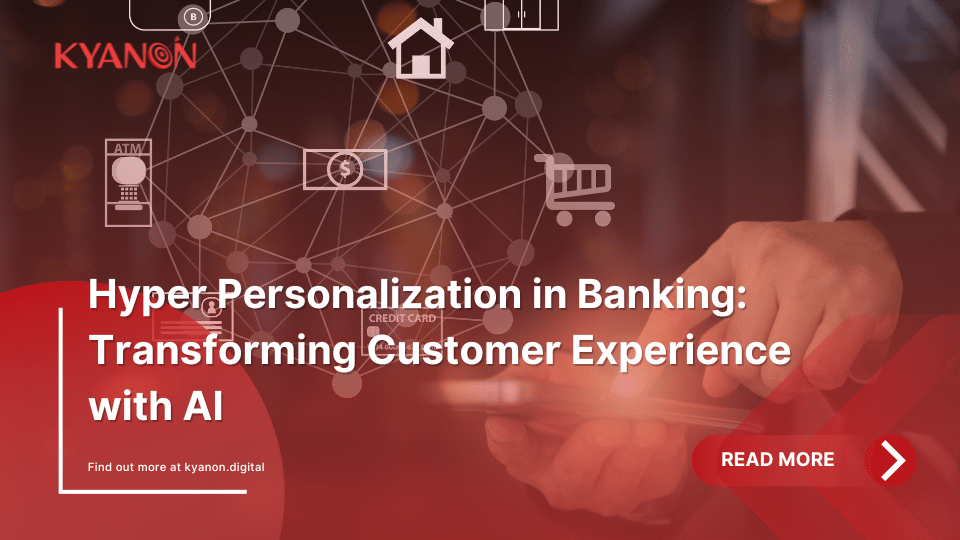In today’s digital landscape, hyper personalization is transforming how businesses interact with customers. By using real-time data, AI and machine learning, companies can create personalized experiences that meet individual needs.
For banks, this is more important than ever. Customers expect more than standard services—they want tailored solutions that align with their unique financial goals. Hyper personalization in banking applications allows institutions to offer customized advice and products, building stronger relationships and trust.
This blog will explore how hyper personalization not only enhances customer satisfaction but also helps banks generate leads and attract new business in a competitive market.

1. Understanding Hyper Personalization in Banking
In the past, traditional banking services followed a one-size-fits-all approach, offering generic products and broad financial advice that lacked personalization. Customer interactions were minimal, and services were designed to cater to large groups rather than individual needs.
With the advent of digital banking technologies, things have changed. Innovations like mobile banking apps, AI-driven chatbots, and real-time analytics have reshaped customer expectations. Now, customers demand services tailored to their unique preferences and financial goals.

This is where hyper personalization in banking comes into play. By using advanced data analytics, artificial intelligence (AI), and machine learning (ML), banks can offer personalized product recommendations, custom financial insights, and seamless experiences. Hyper personalization goes beyond traditional personalization by predicting individual needs and delivering real-time, relevant solutions, ultimately enhancing the overall customer experience and driving long-term loyalty.
2. Benefits of Hyper Personalization in Banking Applications
The adoption of hyper personalization in banking offers a range of benefits that can significantly improve customer relationships and drive business growth.
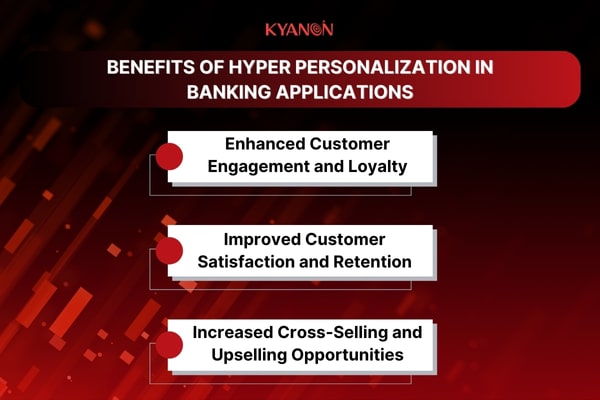
2.1. Enhanced Customer Engagement and Loyalty
Hyper personalization allows banks to connect with customers on a deeper level by delivering tailored financial advice, personalized product offers, and real-time solutions based on individual behaviors and preferences. This level of personalization builds trust and fosters stronger emotional connections, leading to increased customer engagement and long-term loyalty.
2.2. Improved Customer Satisfaction and Retention
By providing highly relevant and timely services, hyper personalization ensures that customers feel understood and valued. Whether it’s offering a custom loan plan or sending proactive financial tips, banks can enhance customer satisfaction, making it more likely that customers will stay with the institution, improving overall retention rates.
2.3. Increased Cross-Selling and Upselling Opportunities
With deep insights into customer data, banks can identify opportunities for cross-selling and upselling. By recommending relevant products—such as insurance or investment plans—at the right time, hyper personalization helps increase revenue while also meeting customers’ evolving financial needs. This strategy not only boosts sales but also adds value to the customer relationship.
3. Technology Enablers for Hyper Personalization
The success of hyper personalization in banking relies heavily on cutting-edge technologies that enable banks to deliver tailored experiences at scale. These key enablers transform customer interactions and make personalized banking services possible.
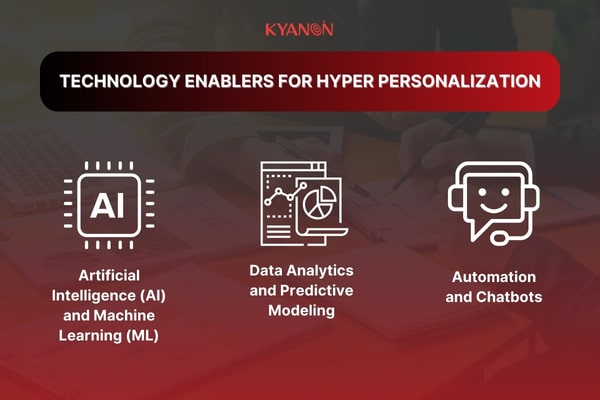
3.1. Artificial Intelligence (AI) and Machine Learning (ML)
AI and ML are the driving forces behind hyper personalization. By analyzing vast amounts of customer data, these technologies can identify patterns, predict future behaviors, and generate personalized product recommendations. In banking, AI and ML help deliver real-time financial advice, detect fraud, and even automate decision-making, allowing institutions to stay ahead of customer needs.
3.2. Data Analytics and Predictive Modeling
Data analytics and predictive modeling play a crucial role in understanding customer preferences. By gathering insights from customer transactions, spending habits, and financial goals, banks can create highly accurate profiles. These profiles allow for personalized services, such as suggesting the right investment options or tailored loan offers. Predictive models enable banks to anticipate customer needs, improving the overall customer experience through personalized solutions.
3.3. Automation and Chatbots
Automation tools and AI-powered chatbots bring hyper personalization to life by enabling real-time customer interactions. Chatbots can handle routine inquiries, offer personalized financial advice, and guide customers through various services, all while learning from each interaction to improve future responses. This not only enhances efficiency but also creates a seamless, personalized experience for users, available 24/7.
4. Case Studies of Successful Hyper Personalization in Banking
Many forward-thinking banks have successfully implemented hyper personalization strategies, showcasing the significant impact it can have on customer engagement, acquisition, and revenue growth. Let’s explore a few examples of how leading financial institutions are leveraging hyper personalization in banking to drive success.
4.1. Bank of America – Personalized Financial Advice with AI
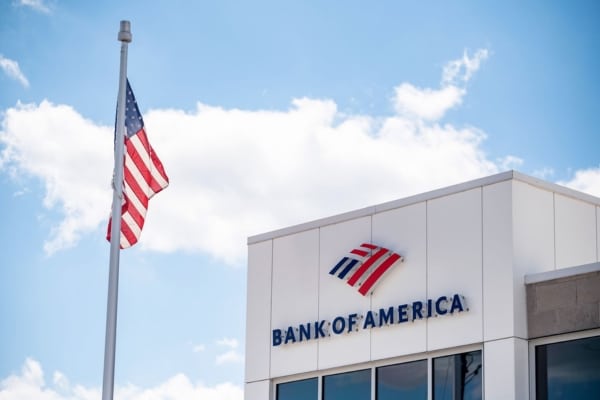
Source: Bank of Amercia
Bank of America has introduced its virtual assistant, Erica, as a prime example of how AI-powered hyper personalization can transform customer interactions. Using data analytics and AI, Erica provides customers with tailored financial advice, reminders, and spending insights based on individual behavior. This strategy has enhanced customer acquisition by offering a unique, personalized experience that resonates with each user’s financial needs.
4.2. JPMorgan Chase – Predictive Analytics for Customized Offers

Source: eMarketer
JPMorgan Chase uses predictive analytics to deliver highly personalized credit card and loan offers to customers. By analyzing spending patterns and lifestyle data, the bank can recommend relevant products at just the right time. This hyper personalization strategy has resulted in higher customer retention and significantly improved cross-selling and upselling opportunities, contributing to substantial revenue growth.
4.3. BBVA – Data-Driven Personalization for Enhanced Customer Experience

Source: BBVA
BBVA is another leader in hyper personalization, using real-time data to offer customized banking solutions. Through its mobile app, BBVA provides tailored product suggestions, proactive financial advice, and personalized alerts. This approach has not only increased customer engagement but has also driven significant customer acquisition and revenue growth, as customers appreciate the relevance and timeliness of the bank’s personalized offers.
These case studies highlight how hyper personalization in banking is not just a trend, but a powerful strategy for building deeper customer relationships, enhancing engagement, and driving business growth.
5. Challenges and Considerations
While hyper personalization in banking offers significant benefits, it also presents a unique set of challenges and considerations that institutions must navigate carefully.
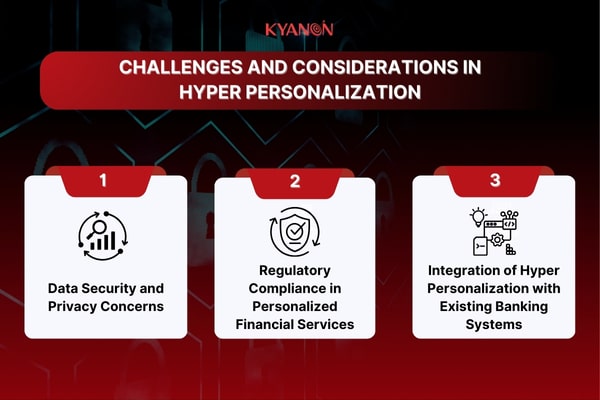
5.1. Data Security and Privacy Concerns
As banks collect and analyze vast amounts of personal data to deliver hyper personalized experiences, data security and privacy become critical concerns. Customers need to trust that their sensitive information is protected against breaches and misuse. To address these concerns, banks must implement robust security measures and transparent data practices that comply with privacy regulations, ensuring customers feel safe while enjoying tailored services.
5.2. Regulatory Compliance in Personalized Financial Services
The financial services industry is heavily regulated, and banks must ensure that their hyper personalization strategies comply with existing laws and guidelines. Regulations like the General Data Protection Regulation (GDPR) and the California Consumer Privacy Act (CCPA) impose strict requirements on data usage and customer consent. Navigating these regulatory frameworks is essential for maintaining customer trust and avoiding potential legal pitfalls in the implementation of personalized services.
5.3. Integration of Hyper Personalization with Existing Banking Systems
Successfully implementing hyper personalization requires integrating advanced technologies with existing banking systems. Many banks still rely on legacy systems that may not support the necessary data analytics and AI capabilities. This integration can be complex and costly, requiring a clear strategy and investment in modernizing technology infrastructures. Ensuring seamless collaboration between new hyper personalization tools and existing platforms is vital for delivering a cohesive and efficient customer experience.
6. Future Trends in Hyper Personalization
As the landscape of hyper personalization in banking continues to evolve, several key trends are shaping the future of personalized financial services. These innovations will not only enhance customer experiences but also redefine how banks interact with their clients.
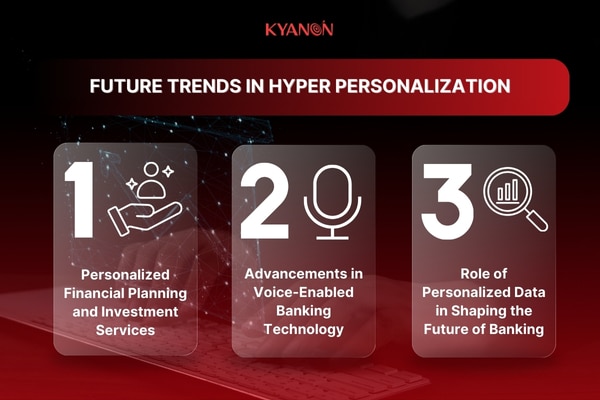
6.1. Personalized Financial Planning and Investment Services
The demand for tailored financial advice is on the rise, and banks are increasingly adopting personalized financial planning tools to meet this need. By leveraging advanced data analytics and AI, institutions can offer customized investment strategies that align with individual risk appetites, goals, and financial situations. This trend empowers customers to make informed decisions about their financial futures, reinforcing the importance of hyper personalization in enhancing customer satisfaction and loyalty.
6.2. Advancements in Voice-Enabled Banking Technology
Voice-enabled technology is transforming customer interactions in banking. As smart speakers and voice assistants become more prevalent, banks are integrating voice recognition features to provide hyper personalized services. Customers will soon be able to conduct transactions, access account information, and receive personalized financial advice through voice commands. This innovation not only offers convenience but also enhances the overall customer experience, making banking more accessible and user-friendly.
6.3. Role of Personalized Data in Shaping the Future of Banking
The future of banking will heavily rely on personalized data to drive hyper personalization strategies. As banks collect more data through various channels, they can gain deeper insights into customer behaviors and preferences. This wealth of information will enable institutions to refine their offerings and create highly relevant, timely solutions. The use of big data and predictive analytics will become increasingly important in anticipating customer needs and enhancing the personalization of financial products and services.
7. Final thoughts
In today’s competitive digital banking landscape, hyper personalization is not just a luxury—it’s a necessity. As we’ve explored, it significantly enhances customer engagement, satisfaction, and loyalty by delivering tailored financial solutions that meet individual needs. The importance of hyper personalization in the banking industry cannot be overstated; it’s a key driver for both customer retention and business growth.
At Kyanon Digital, we understand the transformative power of hyper personalization and are committed to helping banks unlock its potential. As a top solution provider in this space, we offer consultancy services that guide institutions in implementing effective hyper personalization strategies tailored to their specific needs.
Ready to take your banking services to the next level? Contact Kyanon Digital today to learn how we can help you harness the power of hyper personalization to drive business growth and enhance the customer experience.
